GPCR/G protein

All GPCRs share a common seven trans-membrane structure. GPCRs are associated with heterotrimeric G-proteins which are GTP-binding proteins made of alpha, beta, and gamma subunits. When a ligand binds to GPCR, it activates the attached G-protein, the GDP is replaced with GTP. The activated G-protein then dissociates into an alpha and a beta-gamma complex which activates downstream signaling pathways. These intracellular signaling pathways include cAMP/PKA, calcium/NFAT, phospholipase C, protein tyrosine kinases, MAP kinases, PI-3-kinase, nitric oxide/cGMP, Rho, and JAK/STAT.
GPCRs are one of the most important therapeutic targets for various diseases, over 30% of all modern medicinal drugs target this family. Aberrant GPCR functions are involved in pathological conditions such as neurological, immunological and hormonal disorders. A large number of GPCRs have been identified, but whose ligands are not known, are classified as orphan receptors.
-
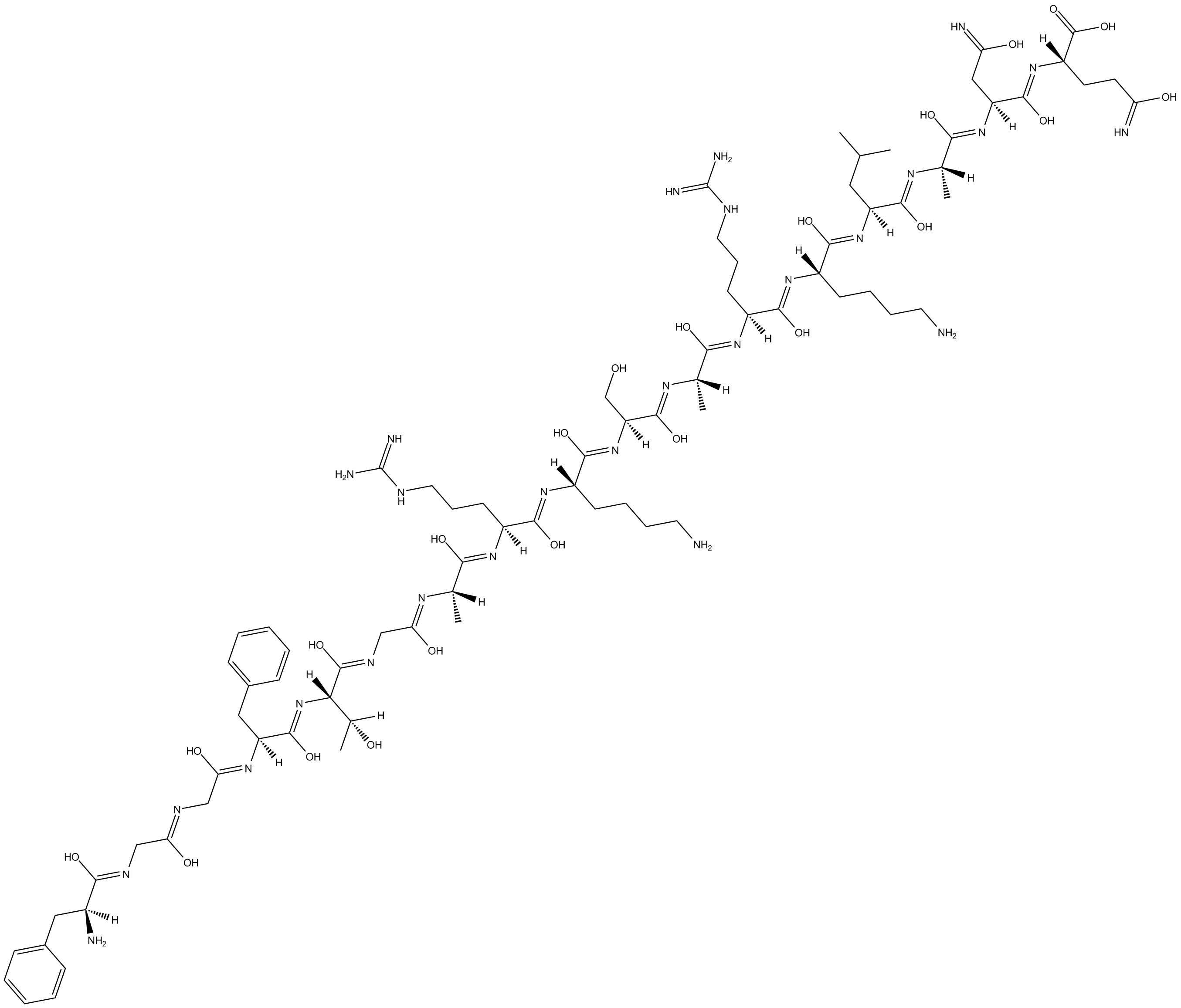 B5033 NociceptinSummary: Endogenous ligand for the NOP opioid receptor
B5033 NociceptinSummary: Endogenous ligand for the NOP opioid receptor -
![[Phe1Ψ(CH2-NH)Gly2]Nociceptin(1-13)NH2](https://www.apexbt.com/media/catalog/product/placeholder/default/general.png) B5049 [Phe1Ψ(CH2-NH)Gly2]Nociceptin(1-13)NH2Summary: Potent agonist of the nociceptin (ORL1) receptor
B5049 [Phe1Ψ(CH2-NH)Gly2]Nociceptin(1-13)NH2Summary: Potent agonist of the nociceptin (ORL1) receptor -
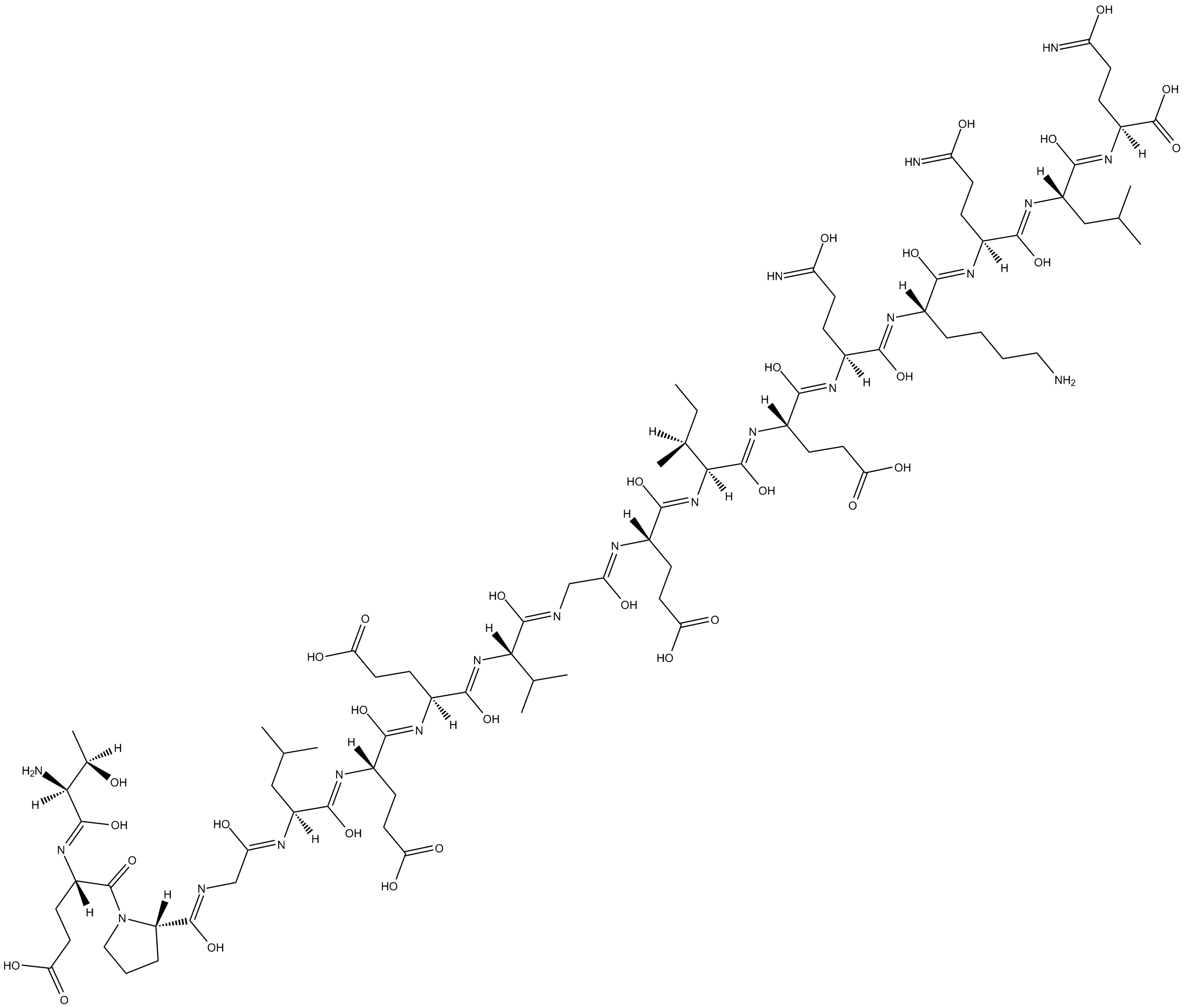 B5052 Nocistatin (bovine)Summary: endogenous peptide used to block nociceptin-induced allodynia and hyperalgesia
B5052 Nocistatin (bovine)Summary: endogenous peptide used to block nociceptin-induced allodynia and hyperalgesia -
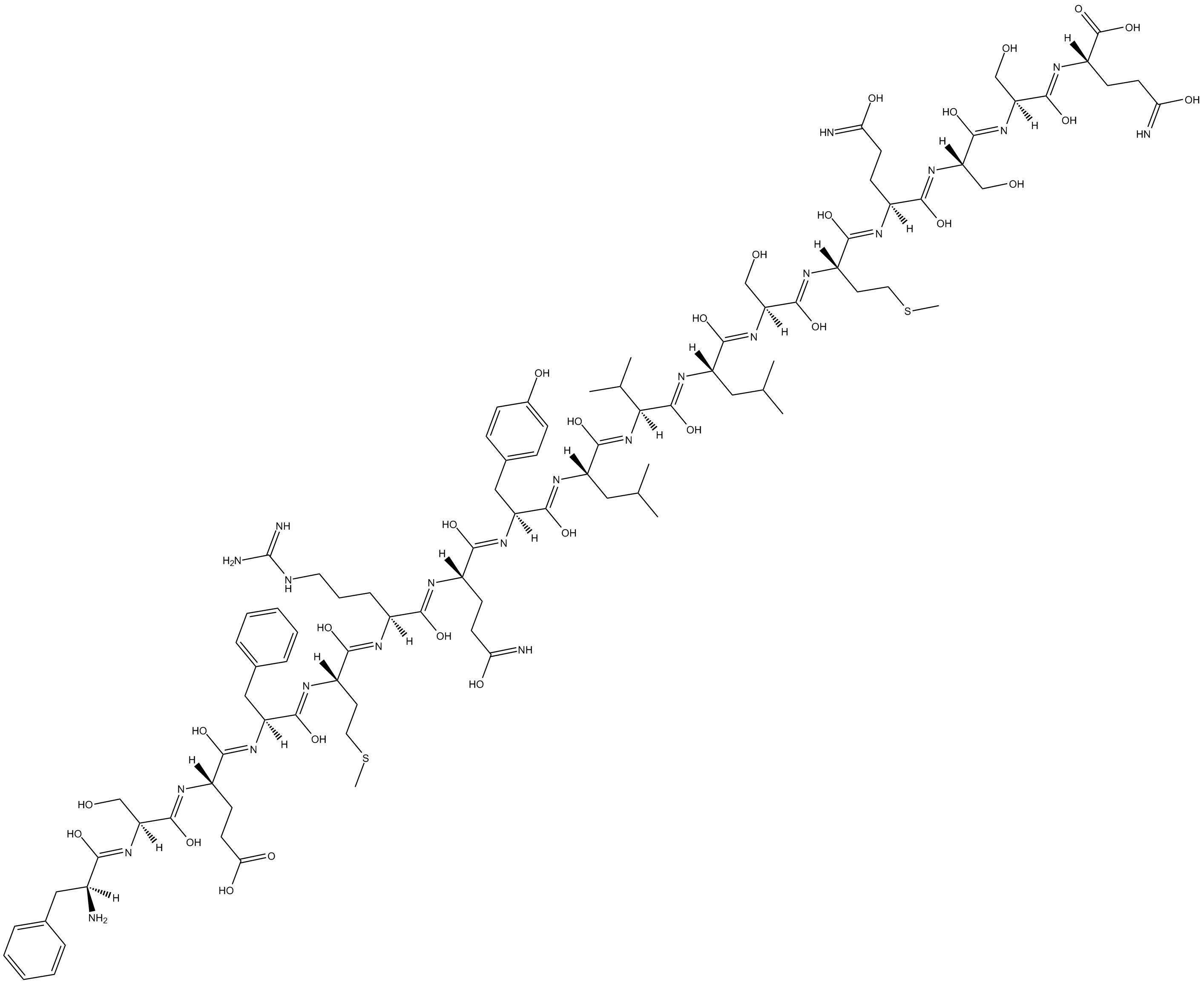 B5053 NocIISummary: Orphan neuropeptide,stimulates locomotion in mice
B5053 NocIISummary: Orphan neuropeptide,stimulates locomotion in mice -
 B5081 Nocistatin (human)Summary: Blocker of nociceptin-induced allodynia and hyperalgesia
B5081 Nocistatin (human)Summary: Blocker of nociceptin-induced allodynia and hyperalgesia -
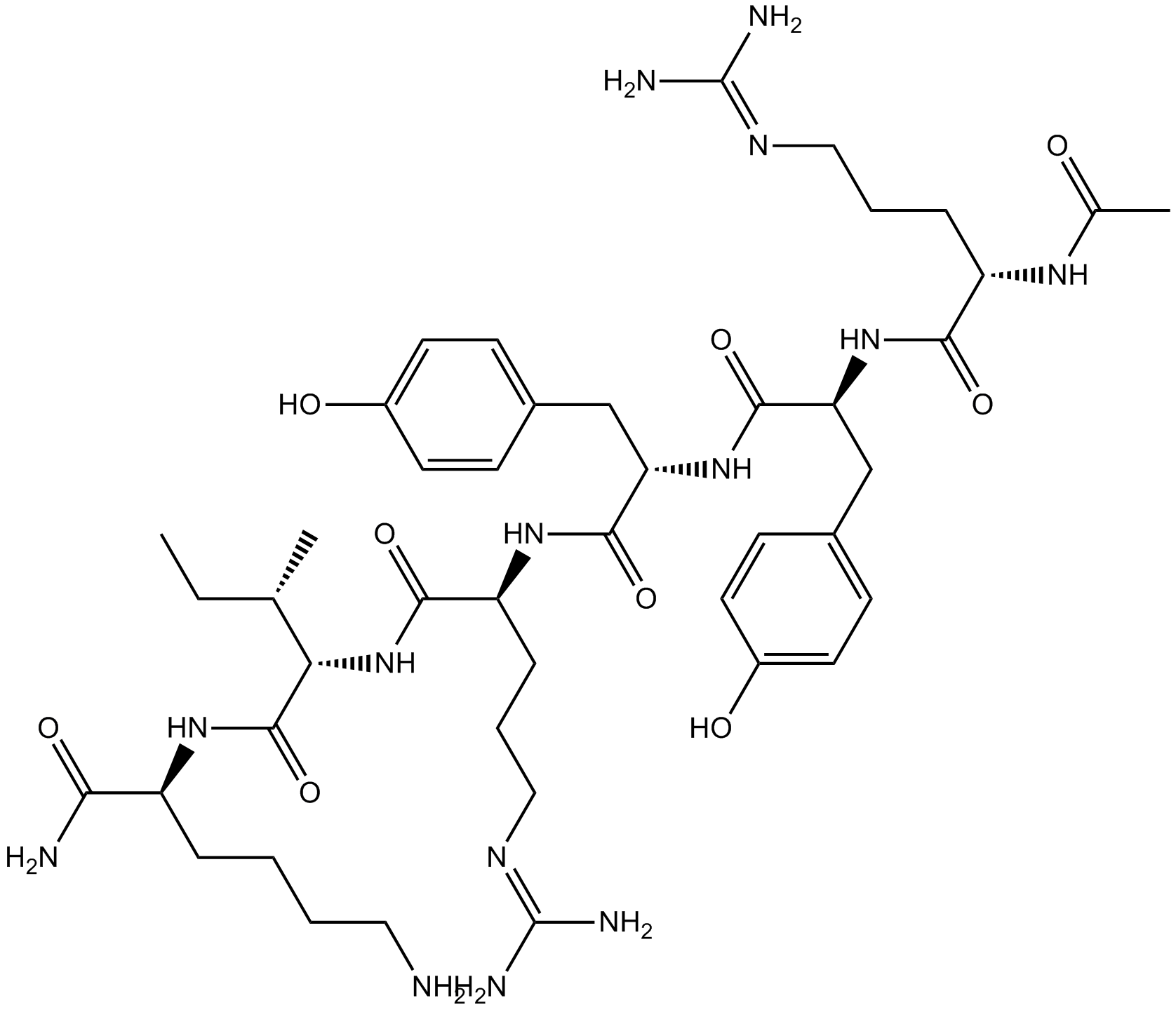 B5085 Ac-RYYRIK-NH2Summary: High affinity ligand for the NOP site
B5085 Ac-RYYRIK-NH2Summary: High affinity ligand for the NOP site -
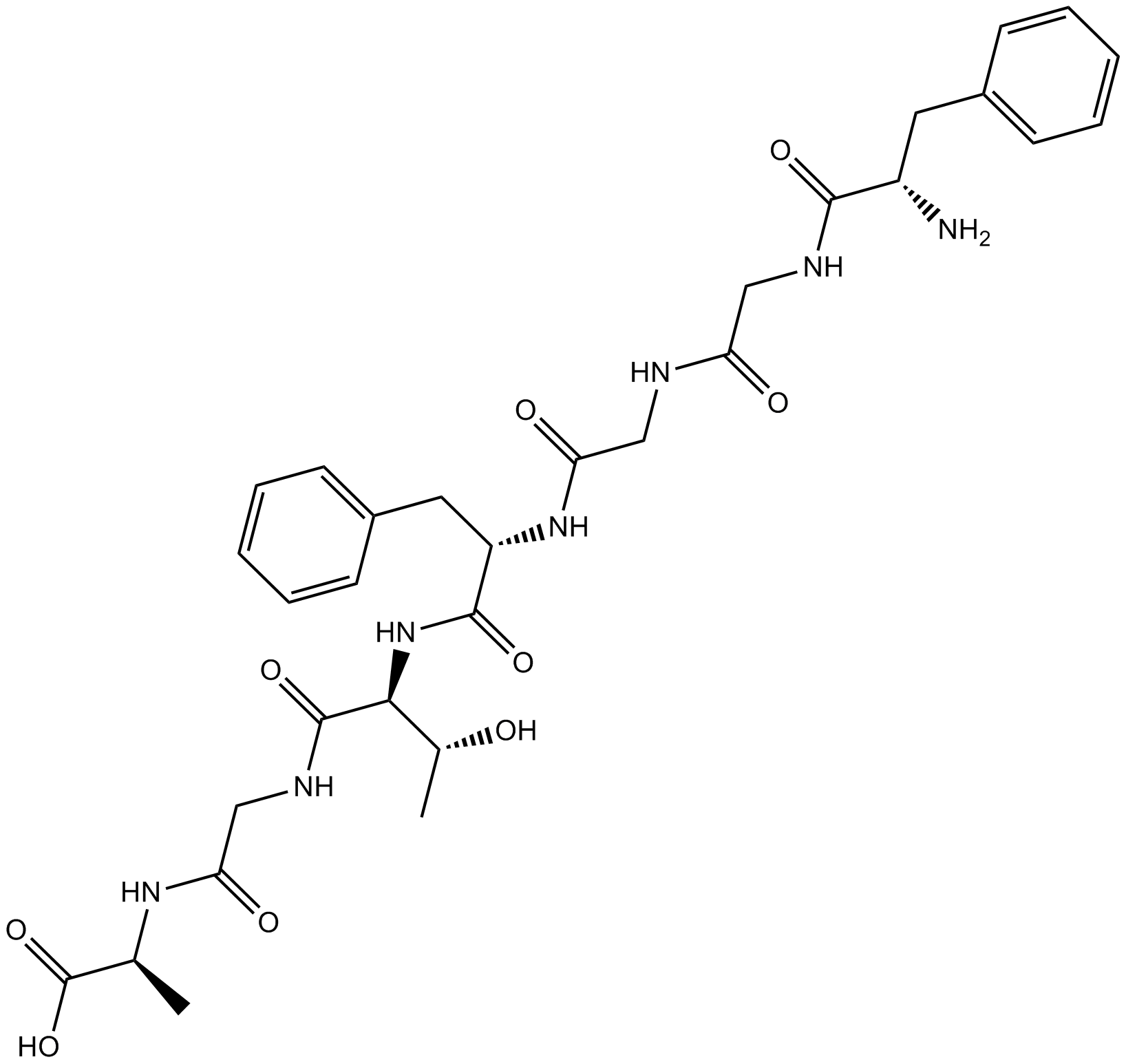 B5087 Nociceptin (1-7)Summary: Bioactive metabolite of nociceptin, antagonist of nociceptin-induced hyperalgesia
B5087 Nociceptin (1-7)Summary: Bioactive metabolite of nociceptin, antagonist of nociceptin-induced hyperalgesia -
![[Nphe1]Nociceptin(1-13)NH2](/pub/media/prod_images/b/5/b5089.png) B5089 [Nphe1]Nociceptin(1-13)NH2Summary: Selective and competitive nociceptin receptor antagonist
B5089 [Nphe1]Nociceptin(1-13)NH2Summary: Selective and competitive nociceptin receptor antagonist -
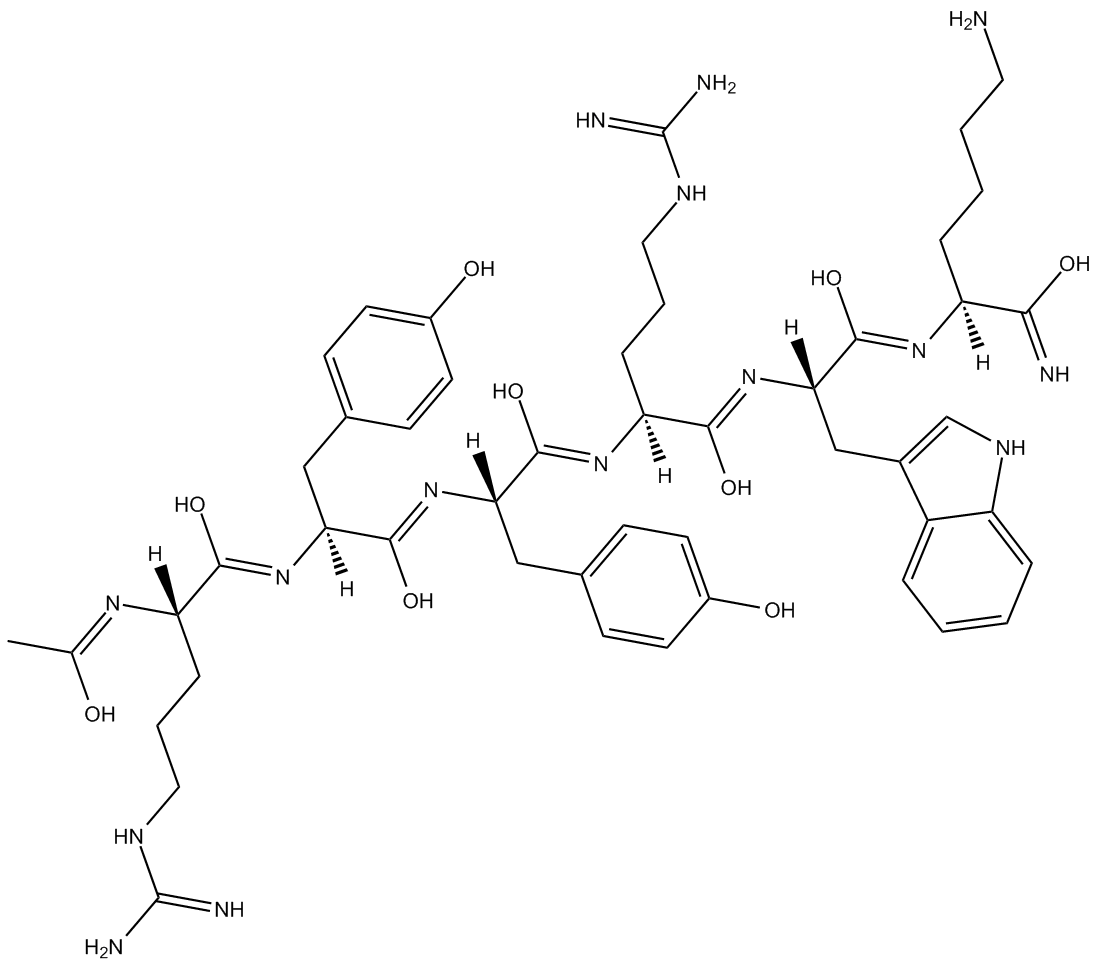 B5108 Ac-RYYRWK-NH2Summary: selective partial agonist peptide for the NOP receptor
B5108 Ac-RYYRWK-NH2Summary: selective partial agonist peptide for the NOP receptor -
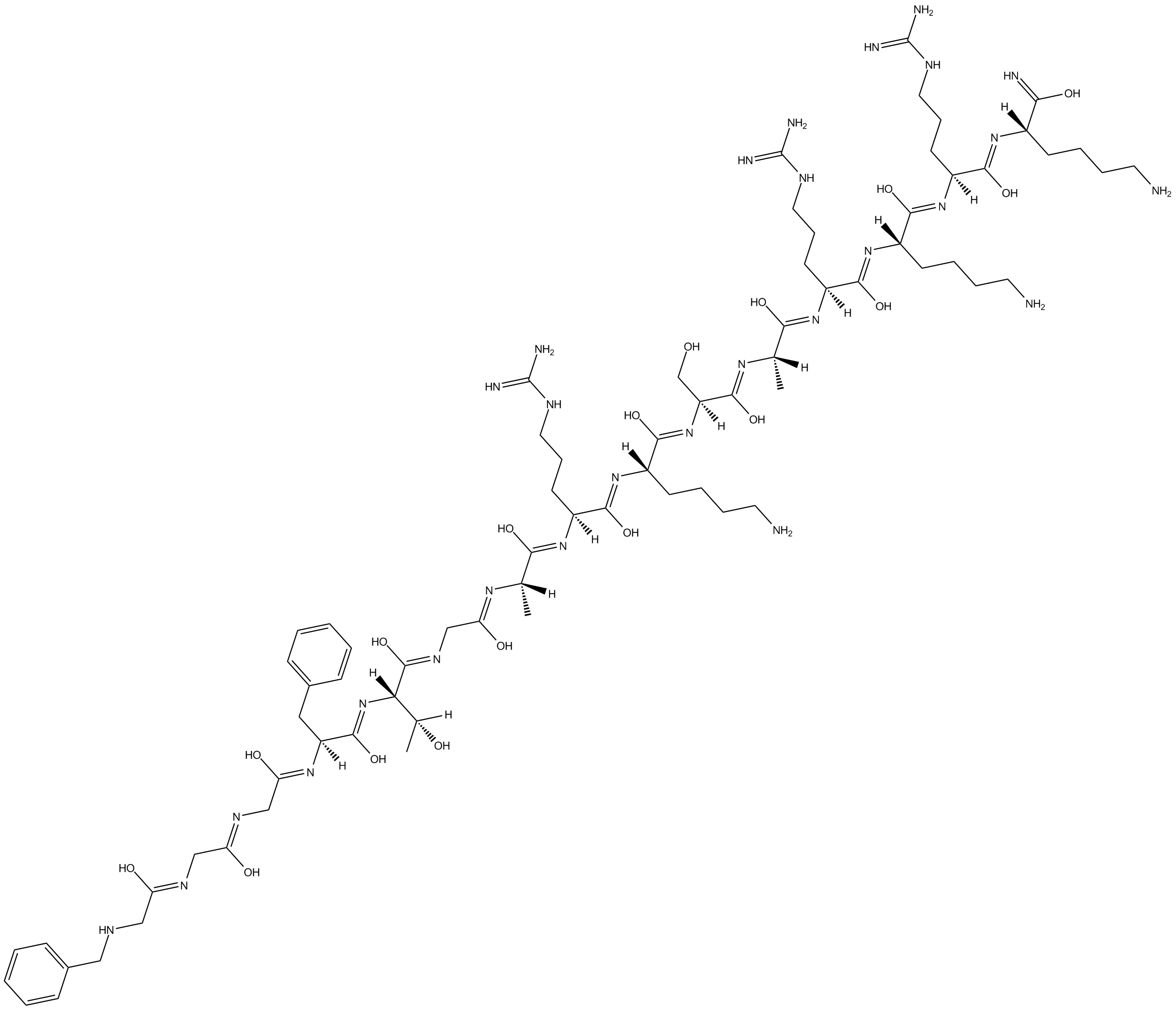 B5128 UFP-101Summary: selective and competitive silent antagonist for the NOP opioid receptor
B5128 UFP-101Summary: selective and competitive silent antagonist for the NOP opioid receptor

